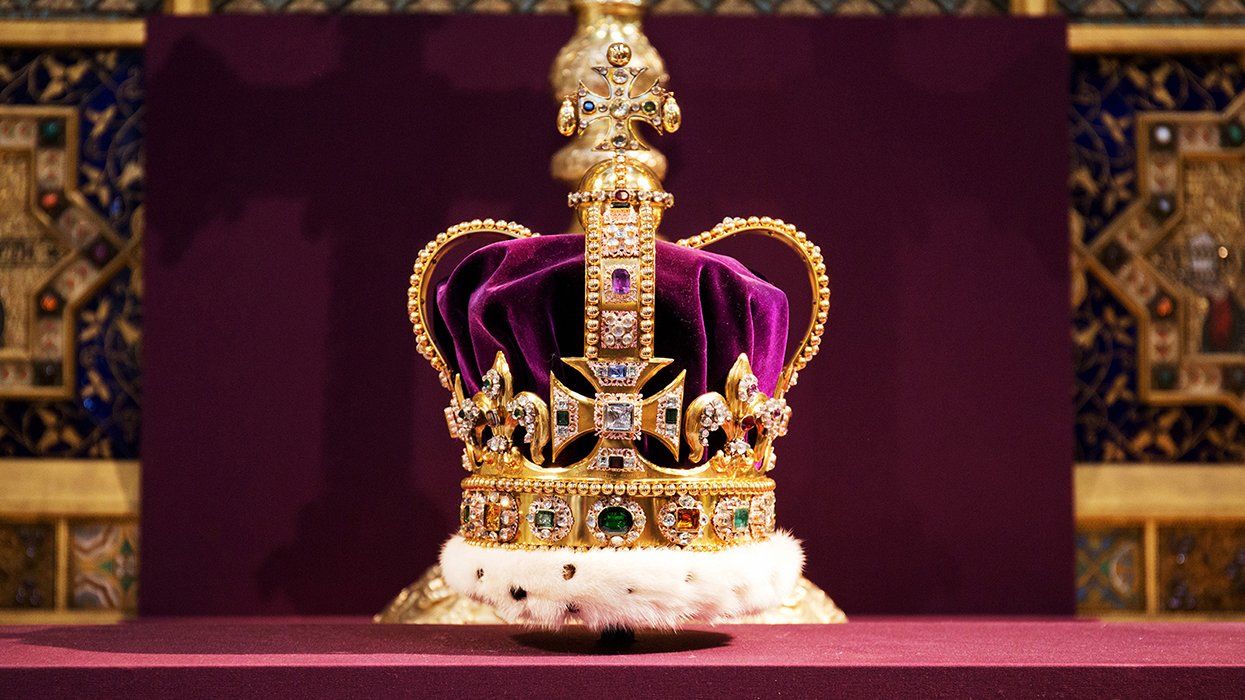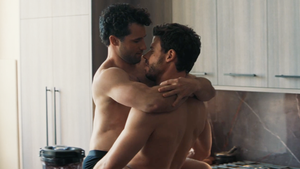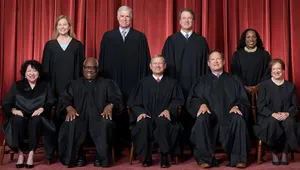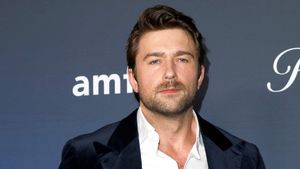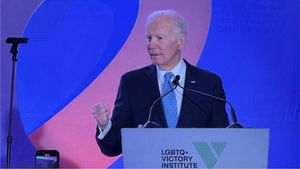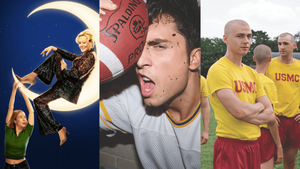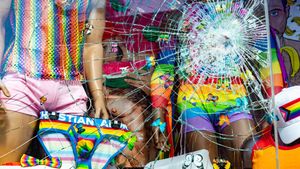All Rights reserved
By continuing to use our site, you agree to our Privacy Policy and Terms of Use.
By Lauren Said-Moorhouse and Max Foster, CNN
(CNN) – With the death of his mother, Queen Elizabeth II, at her rural Balmoral home in September, Charles III instantly became King. In the days that followed, he was formally proclaimed Britain’s new monarch and now, after months of painstaking preparation, his coronation is upon us.
Heir to the throne for 70 years, Charles will be officially crowned in a magnificent and deeply religious ceremony on May 6. Thousands will gather at Westminster Abbey and the surrounding streets of central London to take in a glorious display of British pageantry.
There’s a lot of speculation floating around, and some elements are still being fine-tuned, but if it’s official, we’ve got you covered. Here’s CNN’s essential guide to the celebrations – we’ll keep updating it to ensure you stay in the know.
What is a coronation?
Charles’ accession took place when the Queen died. It was, as expected, a deeply somber period when the nation came together to bid farewell to its longest-reigning sovereign. Eight months on, the coronation will feel very different. This is a moment of public celebration of the new King. It will be a fabulously over-the-top spectacle attended by dignitaries from around the world and watched by billions.
The word “coronation” is derived from the Latin word “corona” meaning a crown. But it’s so much more than literally placing the crown on the sovereign’s head. It’s a symbolic coming together of the monarchy, church, and state for a religious ritual during which the monarch makes vows to both God and country.
Buckingham Palace has said it “will reflect the monarch’s role today and look towards the future, while being rooted in longstanding traditions and pageantry.”
How can I watch the service?
If you’ve been checking your mailbox and an invitation has yet to drop in, not to worry. The ceremony itself is set to begin at 11 a.m. (6 a.m. ET) on May 6, with CNN’s special TV coverage of the King’s coronation from 10 a.m. to 5 p.m. (5 a.m. to 12 p.m. ET). Alternatively, join us here on CNN.com for live coverage throughout the day.
How long will the ceremony be?
Charles’ coronation will be shorter than his mother’s seven decades ago. Back then, the ceremony – which was the first live royal event to be televised – ran for more than three hours.
This time, the Anglican service will be two hours with “representation from other faiths to reflect the diversity of modern Britain,” according to Earl Marshal, the Duke of Norfolk, whose family has been responsible for orchestrating state occasions since 1482. Coronations have stayed largely the same for more than 1,000 years and organizers are leaning on that structure, so there's quite a lot to get through.
What happens during the coronation service?
Right, so let’s get down to the specifics. The Archbishop of Canterbury, Justin Welby, will conduct the ceremony. The core elements of the service are the recognition, oath, anointing, investiture, and crowning, followed by enthronement and homage. The recognition is when the sovereign stands in the theater of the abbey and presents himself or herself to the people. After taking the coronation oath – which is a vow to rule according to law, exercise justice with mercy, and maintain the Church of England – the monarch is anointed with holy oil by the archbishop.
This moment is considered the most sacred part of the service and wasn’t televised in 1953. Ahead of Charles’ big day, Archbishop Welby has explained why we won’t see the King either, writing in the official souvenir program that the moment is “a symbol of being commissioned by the people for a special task for which God’s help is needed.” He added: “It is a moment when The King is set apart for service: service of the people of this country, and service of God.”
The next part is the investiture, when the sovereign is dressed in sacred coronation robes and presented with the symbols of the monarchy: the orb, coronation ring, scepters, and others. Toward the end of the ceremony, St. Edward’s Crown is placed atop the monarch’s head before he or she takes the throne. Traditionally, princes and peers then make their way to the sovereign to pay their respects in what is known as homage. This time though, it’s thought that only Prince William will kneel before the King. Meanwhile, the peers have been replaced by the public who have been invited to swear allegiance to Charles if they wish.
Lambeth Palace, which is the London residence of the Archbishop of Canterbury, designed the service – which is rooted in 1,000 years of tradition – in consultation with the King and the UK government, which weighed in on constitutional elements.
Which crown will King Charles use?
The service features quite a few pieces of sacred coronation regalia, but let’s talk crowns. We’ve already mentioned St. Edward’s Crown. It’s considered the centerpiece because it’s used at the exact moment of crowning. It was made for Charles II in 1661 following the restoration of the monarchy the year before. Its medieval predecessor – which was melted down in 1649 – was believed to date back to the 11th-century English king, Edward the Confessor.
It is not an exact replica of the earlier design but follows the original in featuring four crosses pattée, four fleurs-de-lis, and two arches. Made of solid gold, it’s adorned with 444 precious stones – including rubies, amethysts, sapphires, and other gems – and is fitted with a purple velvet cap and ermine band. Historically, it was supposed to remain at Westminster Abbey, so a second crown was created for the sovereign to wear out of the abbey.
That second crown is the Imperial State Crown, which many will be more familiar with as it’s often used for ceremonial occasions like the State Opening of Parliament. It features a dazzling 2,868 diamonds, including the massive Cullinan II. It was made in 1937 and is a near-replica of Queen Victoria’s earlier Imperial State Crown. The arches in its design were meant to demonstrate that England was not subject to any other earthly power.
Once the spiritual elements of the service are over, King Charles and Camilla will head to St. Edward’s Chapel, a stone shrine at the heart of the abbey, where the King will put on the Imperial State Crown in preparation for the return to Buckingham Palace.
What will King Charles wear for the ceremony?
The King will be reusing several historical garments worn by previous monarchs at past coronations during the Saturday service in the “interests of sustainability and efficiency,” according to Buckingham Palace.
“His Majesty will reuse vestments which featured in the Coronation Services of King George IV in 1821, King George V in 1911, King George VI in 1937 and Queen Elizabeth II in 1953, including the Colobium Sindonis, the Supertunica, the Imperial Mantle, the Coronation Sword Belt and the Coronation Glove,” the palace outlined.
“Although it is customary for the Supertunica and the Imperial Mantle to be reused, His Majesty will also reuse the Colobium Sindonis, Coronation Sword Belt and Coronation Glove worn by his grandfather King George VI, in the interests of sustainability and efficiency,” the palace explained.
Will there be a procession?
This is a royal celebration – of course there’s a procession! In fact, there will be two through the streets of the British capital. One will take the King to be crowned, and after the service there’ll be a larger parade back to Buckingham Palace, where the monarch and members of the royal family will make a balcony appearance and watch a flypast of 60 aircraft. The six-minute flyover will include the famous Red Arrows, modern F-35s, and Typhoons, and the Battle of Britain memorial flight.
The route itself is significantly shorter than the Queen’s five-mile journey to Westminster Abbey back in 1953. Ahead of the service, King Charles will leave Buckingham Palace and head down the Mall in the Diamond Jubilee State Coach, accompanied by the Sovereign's Escort of the Household Cavalry. The procession will pass through Admiralty Arch before turning on to Whitehall and traveling along Parliament Street and on to the abbey. It will return using the same 1.3-mile route, with the monarch traveling this time in the Gold State Coach.
London’s Metropolitan Police Service has said more than 29,000 officers will be deployed in the week leading up to the coronation and over the rest of the holiday weekend.
The security operation – known as Operation Golden Orb – will be one of the largest the Met has led, the force said Wednesday.
“On Coronation Day we will have the largest one-day mobilization of officers seen in decades with just over 11,500 officers on duty,” Deputy Assistant Commissioner Ade Adelekan said. “We want Londoners and visitors coming to the city to enjoy this historic and momentous occasion safely and securely.”
How is King Charles making the ceremony more inclusive?
There’s been a lot of speculation over how the King intends to make his coronation more inclusive while reflecting his vision of the future monarchy. We’ll have to wait and see, but one early indication was announced Friday when Buckingham Palace revealed that faith leaders would lead the first processions into Westminster Abbey.
They’ll be followed by representatives from each of the 15 realms where the King is head of state. Flagbearers of each nation will be accompanied by the governors general and prime ministers. This is the first time non-Protestant faith leaders have been given a role in a coronation.
How much will the coronation cost?
Well, we’re not quite sure... yet. Buckingham Palace said Tuesday that details will be shared in due course. Its comments came after questions were raised over how much was being spent on the state event during a national cost-of-living crisis.
“I’ve seen a number of different estimated figures floating around, some more fanciful than others. The true figures will be shared in due course where expenditure relates to the Sovereign Grant or Government costs,” a palace spokesperson said in a statement.
The statement went on to say that great state occasions, such as the Queen’s funeral, tend to generate more money than is spent holding such events, attracting huge global interest which boosts the national economy.
“Aside from the expenditure estimates you may have seen, it has also been reported that somewhere between one and several billions are expected to flow into the economy as a result of this Coronation,” the spokesperson continued.
“It’s not for me to say how accurate those figures are but certainly the theory pertains that the celebrations are an enormous economic boost to the nation – and just as importantly, with 100 heads of State coming to Britain for the event, it’s a fantastic opportunity for networking, for Government, and for engaging the interest from those nations with everything that Britain has to offer.”
The statement concluded by assuring the British public that the planning of the King's coronation was mindful of the “economic challenge” the country was facing, prompting organizers to look for ways to efficiently produce the event, such as “reusing many ceremonial elements, rather than commissioning new ones.”
Will Camilla be crowned Queen?
Yes. But unlike the three most recent queen consorts – Alexandra, who was Edward VII’s wife; George V’s wife, Mary; and Elizabeth, wife of George VI – Camilla is not having a crown made especially for her coronation. Instead, she’s opted to wear Queen Mary’s Crown. Back when she paid for the silver crown in 1911, Queen Mary’s intention was for it to serve as the permanent crown of future consorts.
The palace has said Camilla’s choice was “in the interests of sustainability and efficiency” but that she was making some “minor changes and additions.” Specifically, she wants to honor her late mother-in-law by resetting the crown with some diamonds – the Cullinan III, IV, and V – from the Queen’s personal collection.
Will Prince Harry and Meghan fly back?
The Duke of Sussex has confirmed his attendance at his father's big day. However, he’ll be going solo. The palace confirmed in April that his wife, Meghan, will be staying in California with their two children, Prince Archie and Princess Lilibet. It is understood Meghan opted to forgo the celebrations as the day coincides with Archie’s 4th birthday.
What about Prince Andrew?
As a member of the royal family, Prince Andrew is expected to attend his brother’s coronation. But as he’s no longer a working royal, he won’t have any formal roles on the day.
Who else has been invited?
Around 2,300 people were sent invitations to the service at Westminster Abbey. While the palace doesn’t release a detailed guest list, it has confirmed that the congregation will be made up of members of the royal family, as well as international representatives from 203 countries, alongside community and charity volunteers.
Coronation organizer Earl Marshal, the Duke of Norfolk said: “For the first time, approximately 100 Heads of State from around the world will attend, together with representatives from the Realms and the Commonwealth and our government, the Lords and the Commons, local heroes and British Empire medalists and many other individuals who have contributed so much to Britain and the wider world today.”
US first lady Jill Biden will lead the American delegation. You can also expect to see a number of royals from around the world make their way to London.
Additionally, 400 young people from charities selected by the King and Queen have been invited to watch the service from nearby St. Margaret’s Church, while military veterans, healthcare workers, and charity representatives have been given spaces to watch on the processional route and in special stands put up along the Mall and near Buckingham Palace.
How will it be different from Queen Elizabeth II’s coronation?
We’ve already mentioned that both the processional route and service will be shorter. Another difference is the number of guests. Back in ‘53, so swollen was the guest list that temporary structures had to be erected within the abbey to accommodate the more than 8,000 people invited.
Specific to the service itself, it will lean on tradition but also be full of firsts, according to Lambeth Palace organizers. Some of the changes to the ancient Christian ceremony – the theme of which is “called to serve” – include the King praying aloud, participation of religious leaders from other faiths, involvement of female clergy, and the incorporation of other languages spoken in the British Isles.
Additionally, the traditional homage of peers has been replaced with a “homage of the people.” This tweak will see the public invited to join “a chorus of millions of voices enabled for the first time in history to participate in this solemn and joyful moment.”
A Lambeth Palace spokesperson said the new homage was “an opportunity for those who wish to be given voice within the service, and for those at home to have a chance to be an extension of the abbey congregation.” The spokesperson added that the change was “very much an invitation, rather than an expectation or request.”
“We live in a wonderfully diverse society with many different perspectives and beliefs – which this coronation celebrates – and therefore it’s quite right that people decide for themselves how they wish to relate to this moment,” the spokesperson added.
What else is happening over the celebratory weekend?
On May 7, the day after the coronation, thousands of events are expected to take place across the country as part of the “Coronation Big Lunch,” while Lionel Richie, Katy Perry and Take That will headline the "Coronation Concert" at Windsor Castle in the evening.
“The Coronation Big Lunch helps you bring the celebration right into your own street or backyard,” said Peter Stewart, chief purpose officer at the event’s organizing body, the Eden Project.
“Sharing friendship, food, and fun together gives people more than just a good time – people feel less lonely, make friends and go on to get more involved with their community,” he added in a statement.
The concert will be attended by an audience of volunteers from the King and Queen’s charity affiliations as well as several thousand members of the public selected through a national ballot held by the BBC. However, some royal fans have slammed Ticketmaster over its handling of the ticketing for May 7.
Ten locations around Britain will also be lit up with light displays, lasers, and drones that evening.
The final day of the long weekend will see Britons enjoying a hopefully sunny bank holiday Monday, with the public encouraged to volunteer in their communities.
The-CNN-Wire
™ & © 2023 Cable News Network, Inc., a Warner Bros. Discovery Company. All rights reserved.




